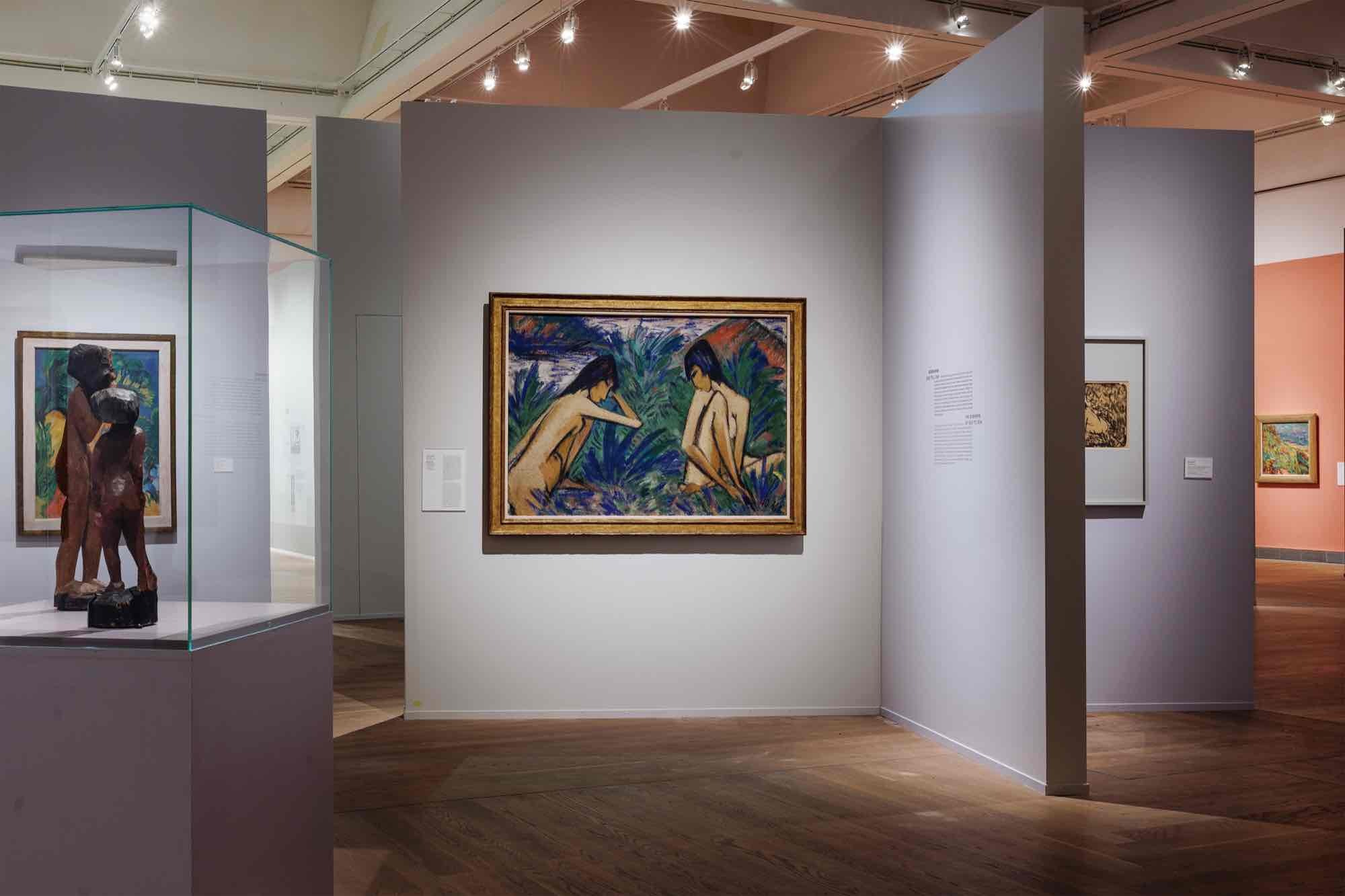German Expressionism
The Artist Group Brücke and the Beginnings of Modernism
21 Sep 2024 - 09 Mar 2025
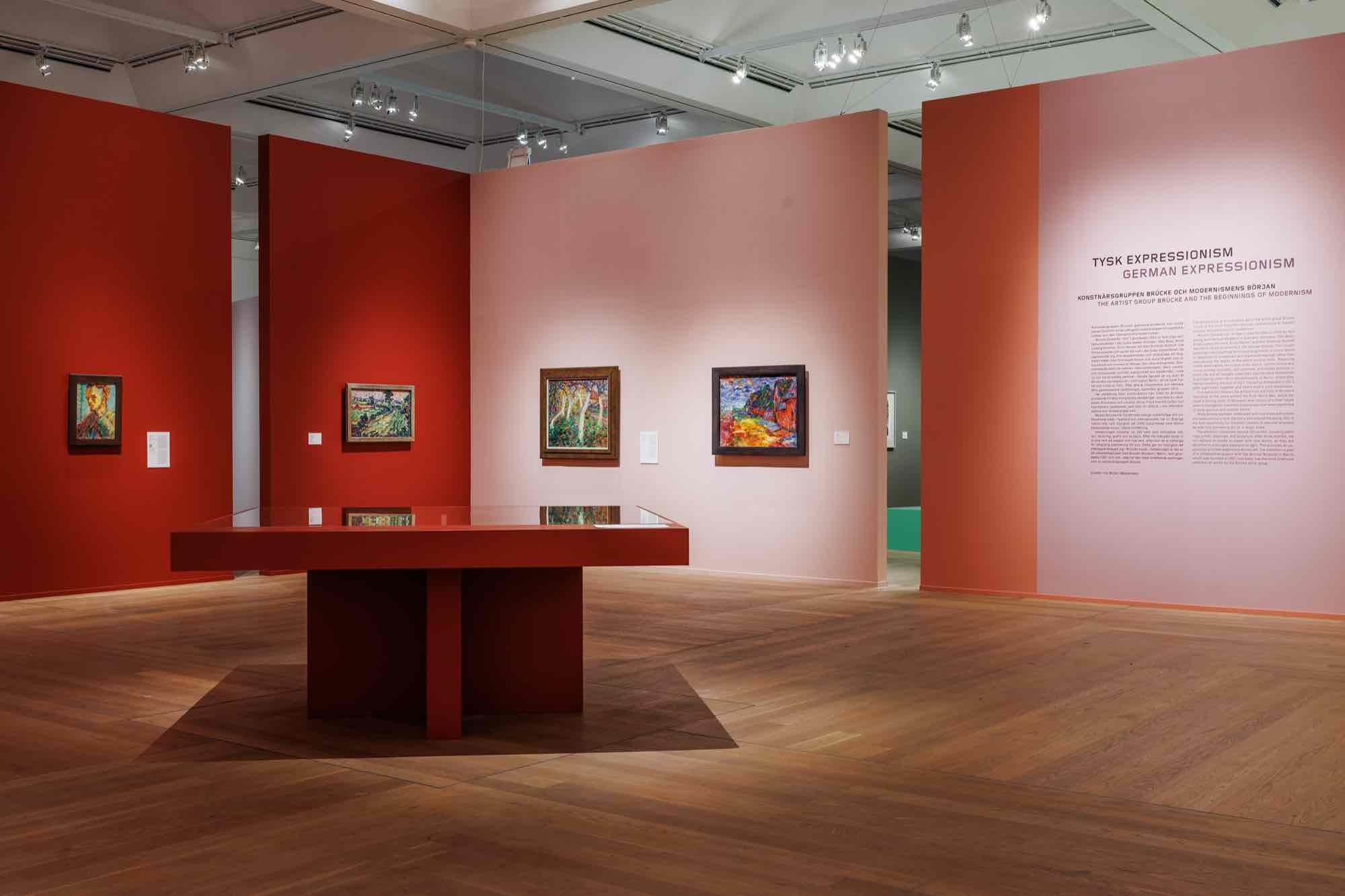
Installation view "German Expressionism: The Artist Group Brücke and the Beginnings of Modernism" Photo: My Matson/Moderna Museet
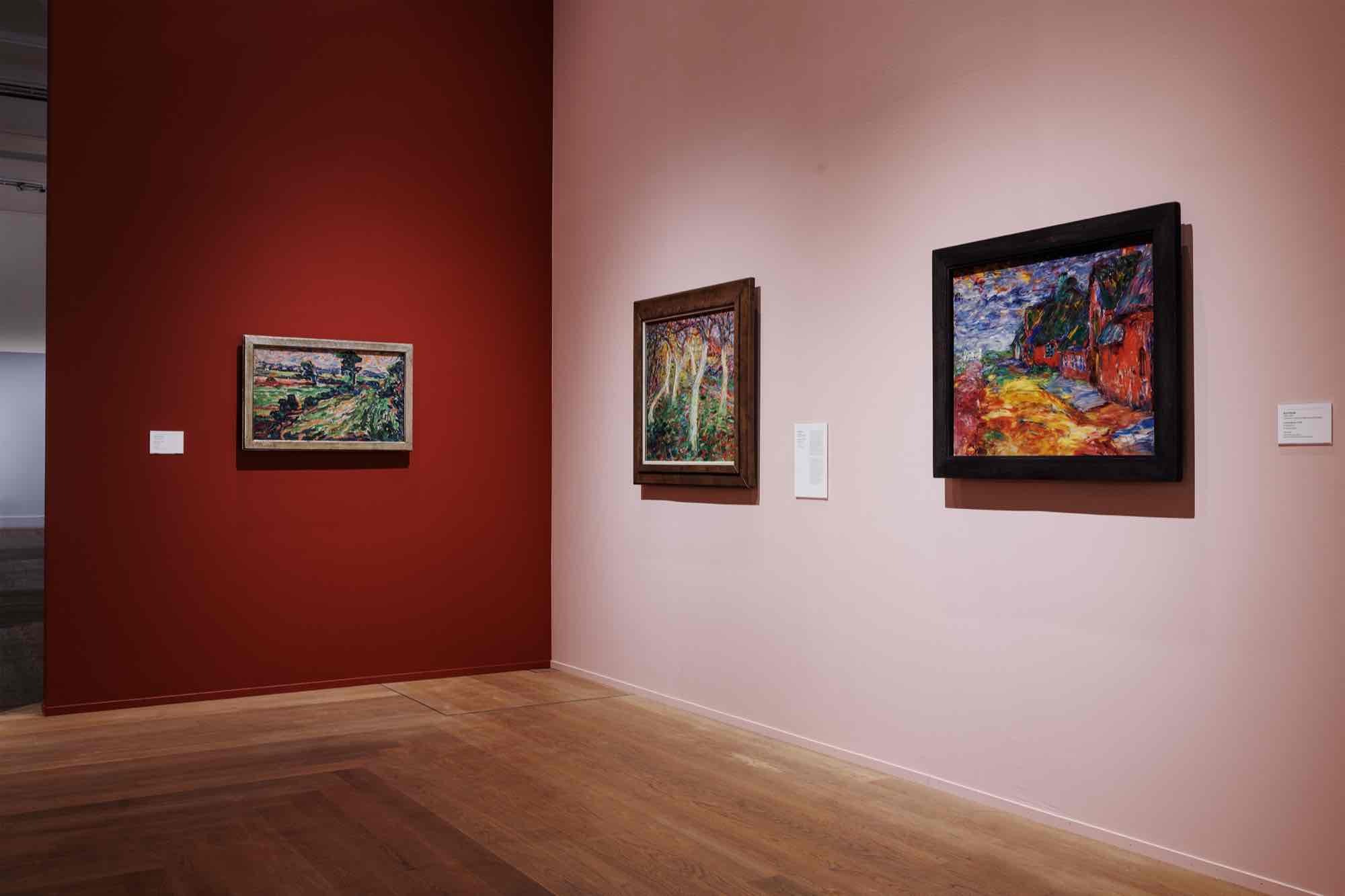
From left: Erich Heckel, Marshland, 1907. Emil Nolde, White Tree Trunks, 1908. Emil Nolde, Frisian Houses I, 1910. Brücke-Museum, Berlin, Karl und Emy Schmidt-Rottluff Stiftung. Photo: My Matson/Moderna Museet
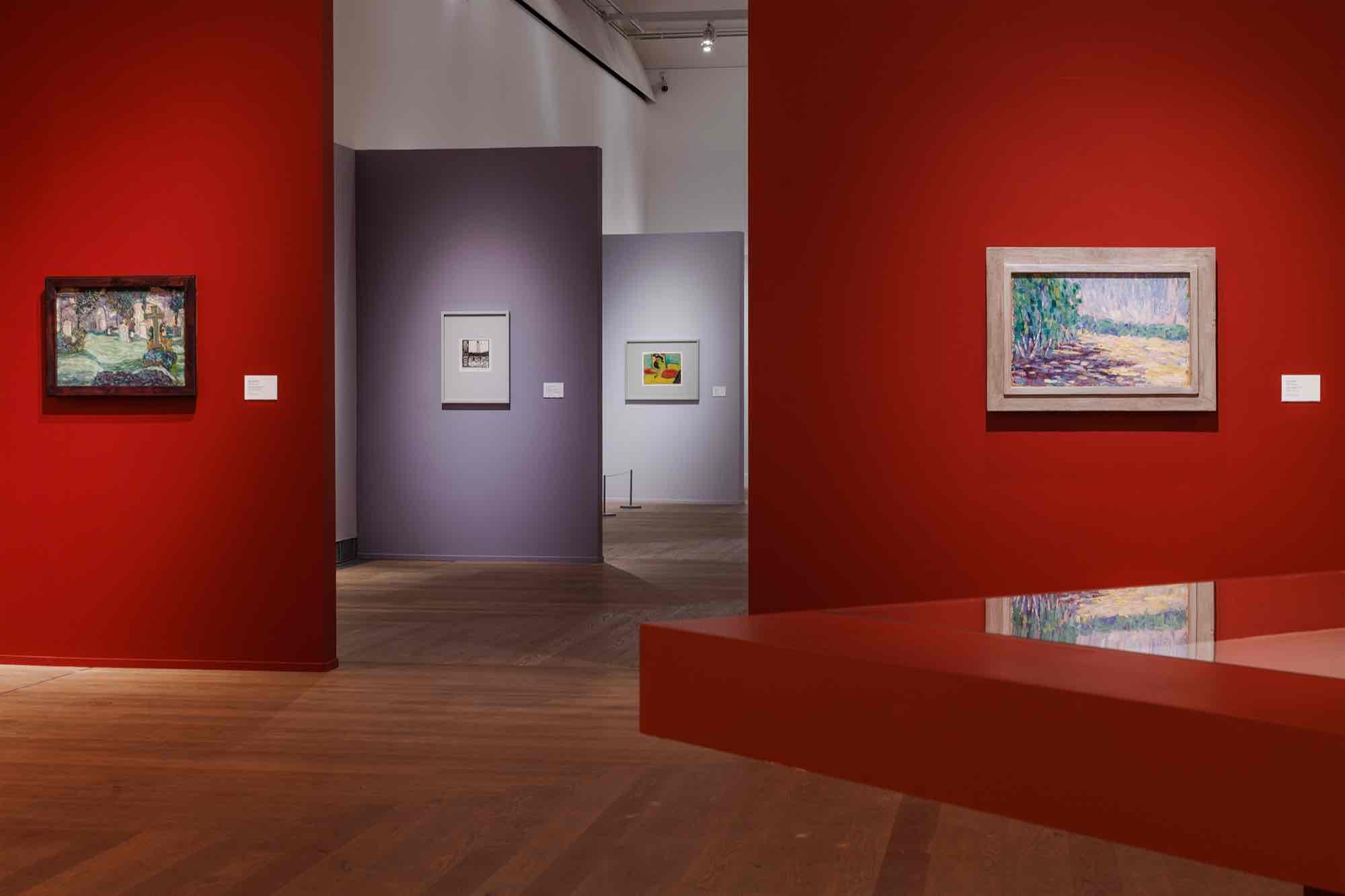
Installation view "German Expressionism: The Artist Group Brücke and the Beginnings of Modernism" Photo: My Matson/Moderna Museet
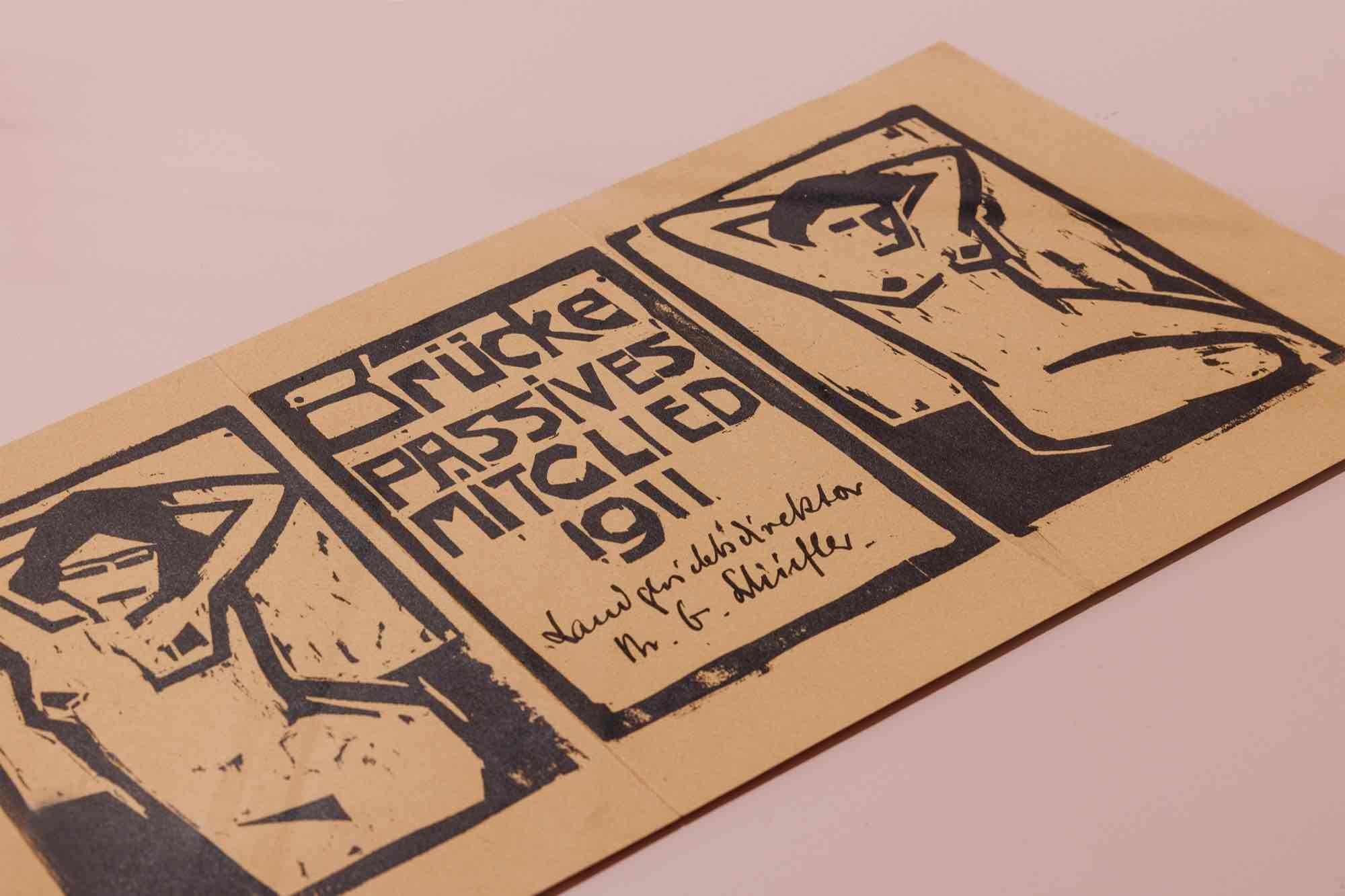
Membership card for passive Brücke members 1911, Karl Schmidt-Rottluff, 1911. Brücke-Museum, Berlin. Photo: My Matson/Moderna Museet

Ernst Ludwig Kirchner, Seagull Hunter, 1912 Städel Museum, Frankfurt am Main Property of the Städelscher Museums-Verein e.V. Photo: My Matson/Moderna Museet

Installation view. In foreground: Ernst Ludwig Kirchner, Erich Heckel and Model in the Studio, 1905. Brücke-Museum, Berlin. Photo: My Matson/Moderna Museet

From left: Erich Heckel, Bather with Towel, 1913. Erich Heckel, Woman, 1913. Brücke-Museum, Berlin. Photo: My Matson/Moderna Museet
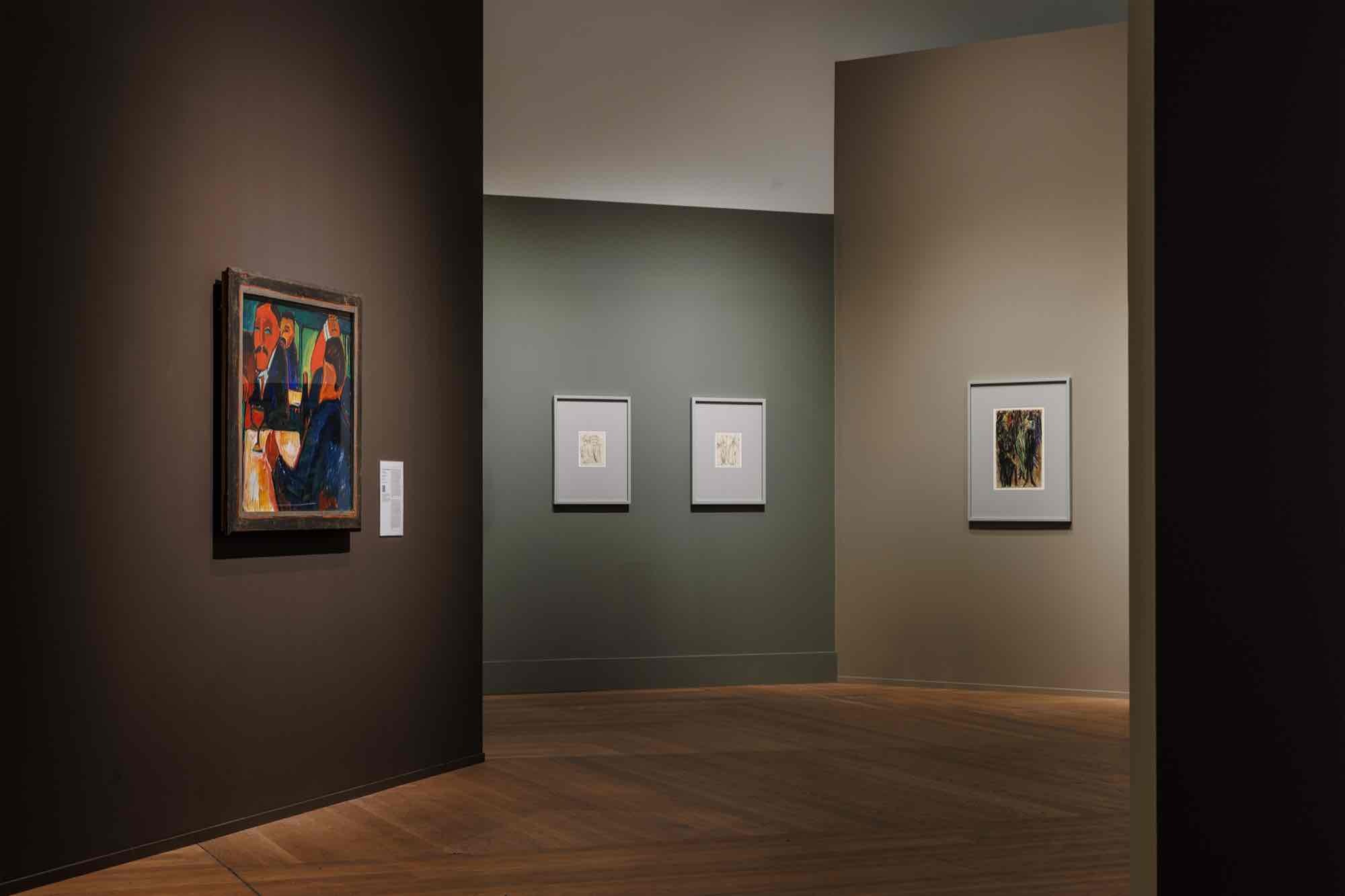
Installation view "German Expressionism: The Artist Group Brücke and the Beginnings of Modernism" Photo: My Matson/Moderna Museet
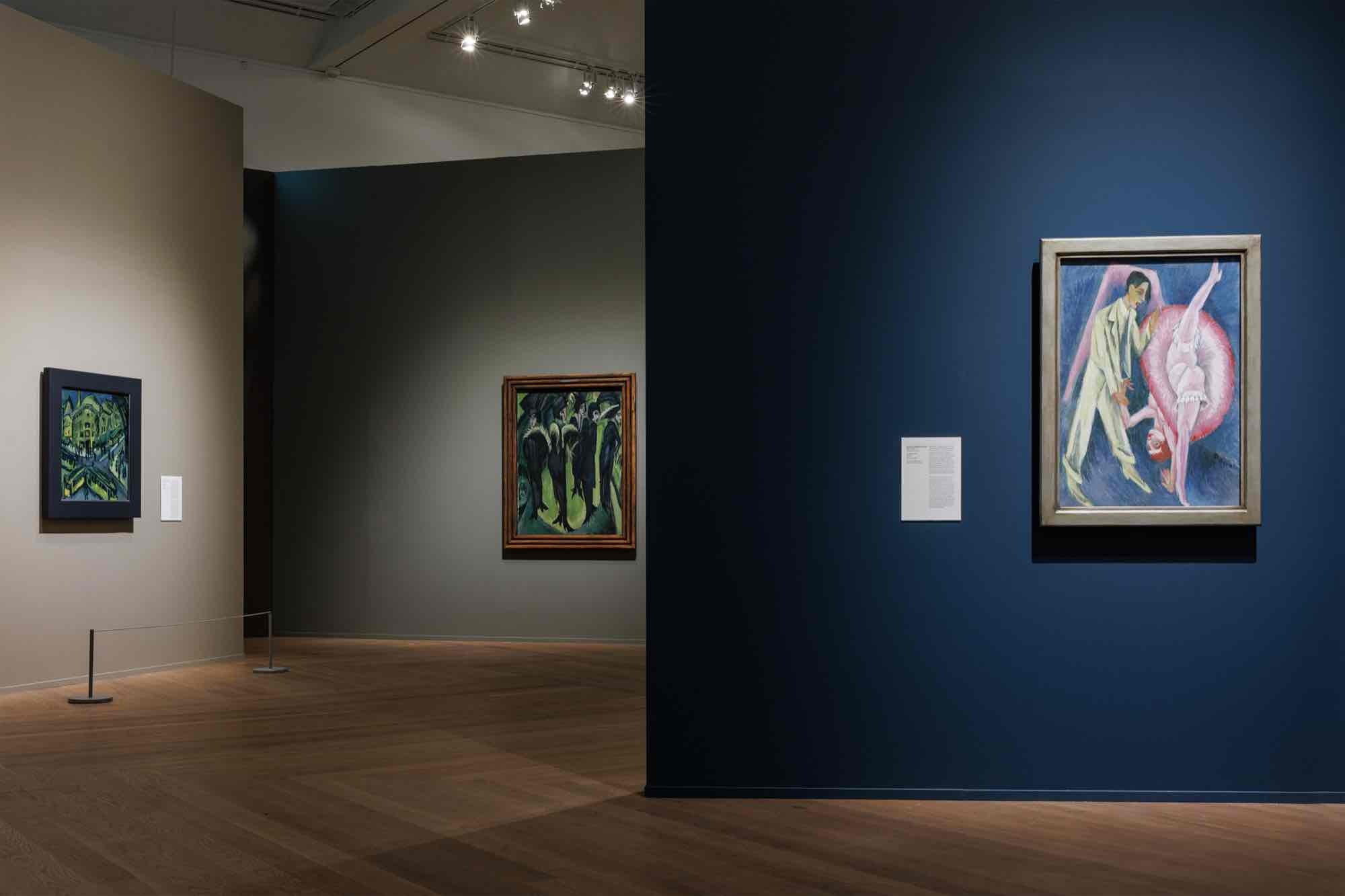
Installation view. In foreground: Ernst Ludwig Kirchner, Dancing Couple, 1914. Brücke-Museum, Berlin. Photo: My Matson/Moderna Museet
The artist group Brücke was founded in 1905 in Dresden by four young, rebellious architecture students. With their collective way of living and working, they radically broke with the prevailing strict moral norms and aesthetic ideals of the German Empire. Brücke’s art marks the beginning of German Expressionism, which would eventually be recognised as Germany’s most important contribution to international modernism.
In Moderna Museet’s extensive exhibition, viewers encounter around 180 works – including paintings, drawings, watercolours, woodcuts, and sculptures – by Ernst Ludwig Kirchner, Otto Bleyl, Erich Heckel, and Karl Schmidt-Rottluff, the four founders of Brücke, as well as by Emil Nolde, Max Pechstein, and Otto Mueller, members who joined later.
The name Brücke, “bridge” in German, has often been interpreted as an allusion to the group’s endeavour to create a link between the art of the past and the future.
Emotions, Man, and Nature
Brücke developed a painting style with vivid colours, simplified forms, broken-up perspectives, and large colour fields that express feelings rather than reproducing an external reality.
The group was inspired by artists such as Paul Gauguin, Vincent van Gogh, and Edvard Munch. They worked with motifs such as man and nature, painted portraits and self-portraits, engaged in nude studies, and depicted life in the studio, striving to make life and art merge. After they moved to the capital Berlin in late 1911, urban life also became an important motif.
Manifesto and New Strategies
From the very beginning, Brücke used clear strategies to market and spread their art, which served as an inspiration to future generations of artists. They formulated a manifesto, invitedsupporting members, organised their own exhibitions, and toured t hem between different cities in Germany. They also designed their own catalogues and posters, employing woodcuts as an important medium.
Over time, Brücke’s members developed in different directions, and the group disbanded in 1913.
In Moderna Museet’s extensive exhibition, viewers encounter around 180 works – including paintings, drawings, watercolours, woodcuts, and sculptures – by Ernst Ludwig Kirchner, Otto Bleyl, Erich Heckel, and Karl Schmidt-Rottluff, the four founders of Brücke, as well as by Emil Nolde, Max Pechstein, and Otto Mueller, members who joined later.
The name Brücke, “bridge” in German, has often been interpreted as an allusion to the group’s endeavour to create a link between the art of the past and the future.
Emotions, Man, and Nature
Brücke developed a painting style with vivid colours, simplified forms, broken-up perspectives, and large colour fields that express feelings rather than reproducing an external reality.
The group was inspired by artists such as Paul Gauguin, Vincent van Gogh, and Edvard Munch. They worked with motifs such as man and nature, painted portraits and self-portraits, engaged in nude studies, and depicted life in the studio, striving to make life and art merge. After they moved to the capital Berlin in late 1911, urban life also became an important motif.
Manifesto and New Strategies
From the very beginning, Brücke used clear strategies to market and spread their art, which served as an inspiration to future generations of artists. They formulated a manifesto, invitedsupporting members, organised their own exhibitions, and toured t hem between different cities in Germany. They also designed their own catalogues and posters, employing woodcuts as an important medium.
Over time, Brücke’s members developed in different directions, and the group disbanded in 1913.

